To Get The Most Out of Your Scoliosis Exercise Program
Here are 10 Tips that you can implement right away that will help you improve effectiveness of your scoliosis exercise program by helping train your brain with corrective movement therapy.
1. Notice the Subtleties of How Your Body Feels During Movement
 When doing your scoliosis specific exercises you should pay particular attention to how your body feels during the movement or posture. In order for the brain to gain a new sensory awareness, it must first perceive a difference to what was done before.
When doing your scoliosis specific exercises you should pay particular attention to how your body feels during the movement or posture. In order for the brain to gain a new sensory awareness, it must first perceive a difference to what was done before.
To achieve this you’ll need to be fully present and aware of your body while doing the exercises. This self observation increases the amount of sensory input to your brain, allowing for a much greater perceptual awareness of when your body is in a corrected position. You should try and notice where your body feels tight, loose, weak, strong, collapsed, lengthened, etc. This helps facilitate your learning of a “New Normal” of the corrected position for your body as you do the exercises.
Also pay attention to how your body’s posture during the course of the day, especially when doing your normal daily activities. Notice which knee you tend to favor when bending down, which side do you tend to favor when sitting on the floor. Think about how these habitual patterns affect your scoliosis then replace the ones that are allowing you to collapse into your curves and replace them with ones that are opposite.
Increasing the awareness of your habitual patterns of movement will allow you to make conscious decisions as to where your body should be to be in order to better support of your spine. While this may feel odd at first, eventually your brain will accommodate to the newly learned position or movements through repetitive, intentional practice. When that occurs they will eventually become your new unconscious pattern of movement.
2. Perform Movements Slowly
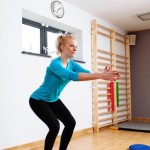 Whenever you perform a movement quickly your brain automatically defaults to the patterns of movement that already exist. Scoliosis causes distortions in your movement patterns so performing a motion quickly only serves to reinforce the abnormal movement pattern. This is opposite of what you want when you’re looking to establish new patterns of movement to help improve the balance of your spine.
Whenever you perform a movement quickly your brain automatically defaults to the patterns of movement that already exist. Scoliosis causes distortions in your movement patterns so performing a motion quickly only serves to reinforce the abnormal movement pattern. This is opposite of what you want when you’re looking to establish new patterns of movement to help improve the balance of your spine.
That’s why it’s recommended to perform each of your corrective scoliosis exercises slowly, especially in the beginning. By slowing down your movement and paying close attention to doing the movement correctly your brain is able to build new neural circuits that are corrective. Repetitive movements done slowly with intention can allow them to eventually become your new predominant pattern of movement and replace the old abnormal patterns that are contributing to the progression of your scoliosis.
3. Use Visual Cues To Increase Your Sensory Motor Awareness
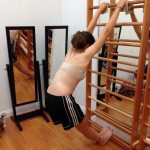 One of the first and most important functions our body develops is an awareness of itself. As infants, we quickly discover our hands and marvel as we explore how they move and taste. This is one of the earliest examples of how our nervous system develops self awareness as we explore the environment of our body.
One of the first and most important functions our body develops is an awareness of itself. As infants, we quickly discover our hands and marvel as we explore how they move and taste. This is one of the earliest examples of how our nervous system develops self awareness as we explore the environment of our body.
Some parts of our body have far more sensory awareness than others. For instance, our hands and face have far more sensory nerve endings compared to other parts of the body allowing us to be acutely aware of sensations in those regions. Other parts of the body have far fewer sensory nerve endings thus far less feedback is provided to our brain. The odd looking figure below is called your Sensory Homunculus, which is an illustration of the amount of information about each of your body parts that’s received in your brain. The size of the body parts in this figure are proportional to the density of sensory nerves distributed in each part of the body. Larger body parts represent area where sensory information is dense while smaller areas have far fewer sensory nerves.

Other areas, like your back have far fewer sensory nerve endings so your sensory awareness is far less perceptive than areas like your face or hands. This is illustrated by the relatively small area for the back compared to the hands and face of the Sensory Homunculus.
Also, since the spine is behind us, on a day-to-day basis we have no real visual references like we do with our hands and face. So for someone with a scoliosis who has no pain in their back, it is very difficult to sense when the spine is twisted. Thus, for adolescents who have no pain it is sometimes hard to get them motivated to fix the problem. If the scoliosis was in a place that you could more easily see and feel, like their nose, they’d be far more motivated to fix it.
To help the patient with scoliosis overcome their lack of sensory motor awareness, in the Nu-Schroth Method of scoliosis specific exercises we often use mirrors to allow you to see your spine while you do a specific corrective exercise. (See photo above) This allows you to use your visual system at the same time you are noticing how your body feels in the corrected position. By using the concept that “Neurons that fire together, wire together” you can enhance the development of your sensory motor pathways.
4. Use Your Imagery To Better Develop Neural Pathways
 Albert Einstein once said that “Imagination Is Everything”. It’s a preview to life’s coming attractions. That’s because the brain cannot differentiate between actually performing a movement and vividly imagining doing it in your mind. This has been known for many years by Sports Psychologist who have used guided imagery to help athletes reach a level of peek performance. By having them vividly image their routines in their mind they are strengthening the neural pathways in their brains to better establish the correct patterned movements.
Albert Einstein once said that “Imagination Is Everything”. It’s a preview to life’s coming attractions. That’s because the brain cannot differentiate between actually performing a movement and vividly imagining doing it in your mind. This has been known for many years by Sports Psychologist who have used guided imagery to help athletes reach a level of peek performance. By having them vividly image their routines in their mind they are strengthening the neural pathways in their brains to better establish the correct patterned movements.
You are encouraged to do this same type of guided imagery in your scoliosis exercise program, since vividly imagining your movements you can also help you develop more robust neural pathways for your corrective movements.
For patients with pain related to their scoliosis this is especially important. If you are having pain with any of the corrective movements we prescribe for you then we encourage you to reduce the range of the particular movement that is causing you pain but still vividly imagine in your mind that your body is doing the movement fully and correctly as when it comes to learning a motor skill the brain cannot distinguish the difference between something vividly imagined and actually done.
5. Vary Your Movements
 Doing a variety of different movements and performing them in different positions helps strengthen your movement corrective patterns in the different positions that you will experience in life. For instance, scoliosis specific breathing exercises are taught in the seated, standing, prone (face down) and supine (face up) positions. This helps develop your weakened muscles of respiration in different positions that you’ll likely experience during your normal activities of daily living.
Doing a variety of different movements and performing them in different positions helps strengthen your movement corrective patterns in the different positions that you will experience in life. For instance, scoliosis specific breathing exercises are taught in the seated, standing, prone (face down) and supine (face up) positions. This helps develop your weakened muscles of respiration in different positions that you’ll likely experience during your normal activities of daily living.
Gravity is a constant force that affects us all in one direction at all times. As human beings our bodies have evolved to allow us to stand and walk in an upright positions. This unique habitus requires a rather precarious balancing act. In the upright position our head must balance evenly over our shoulders, rib cage, hips, knees and ankles. When we deviate from that position, such as the imbalances caused by scoliosis, our body develops adaptive mechanisms to keep us from falling over. Part of the focus of your scoliosis exercise program is to help you bring your spine into better balance while you assume an array of different positions such as lying face down, lying face up, sitting, leaning, walking, climbing, etc.
Each of these variations in your posture requires your supporting muscles to react differently in relation to the force of gravity. Thus you must learn how to activate these muscles to support your spine against gravity in a each of these different planes of movement.
6. Be Fully Engaged and Have A Mindset of Curiosity and Enthusiasm
 The importance of taking responsibility to manage your state for optimal learning cannot be overstated. People learn best by being fully engaged and having a mindset of curiosity and enthusiasm.
The importance of taking responsibility to manage your state for optimal learning cannot be overstated. People learn best by being fully engaged and having a mindset of curiosity and enthusiasm.
Because pain related to your scoliosis may blur your mental focus, it’s paramount to bring a mindset of playfulness and passion to your training. While these Nu-Schroth exercises may look easy, it is likely that for you, they will be challenging. That’s because they are designed to pick on the specific muscles in your body that have been weakened by your scoliosis.
In order to help you improve your scoliosis we must first identify your specific curve patterns so that we can provide you with specific exercises to correct your unique imbalances. That means doing the exercises only on correct side and in the weakened regions of your body to help strengthen them. For this reason we expect that many of the exercises will be difficult for you to perform initially. Don’t worry, with practice you’ll eventually master them. What will help your brain develop these new patterns of movement more rapidly is if you do them with a state of mindful curiosity and enthusiasm. That will allow you to stay resourceful and focused on the journey of your learning.
7. Be Mindful of Your Movements
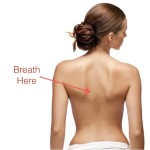 Most types of body work, yoga, Pilates, Feldenkrist all recommend mindfulness when doing their practice. Scoliosis Specific Exercises are no different in that respect.
Most types of body work, yoga, Pilates, Feldenkrist all recommend mindfulness when doing their practice. Scoliosis Specific Exercises are no different in that respect.
Do not allow your mind to wonder during your exercise. Instead pay close attention to how your body is moving while you are doing them. If your mind starts to wonder, simply come back and focus on your breathing and what you are trying to achieve with your exercise.
Pay attention to the specific body part you are working and notice the subtle movements you are making (or not making). The greater your attention, the easier it will be for you to make gains in the portions of the spine that are currently not being supported.
8. Believe in The Possibilities
 Often patients are told by their doctors that there’s nothing that can be done about their scoliosis. Obviously, you’ve overcome that “voodoo curse” , otherwise you wouldn’t be here. Yet often people with scoliosis have some lingering doubts about what they can achieve with their scoliosis treatment.
Often patients are told by their doctors that there’s nothing that can be done about their scoliosis. Obviously, you’ve overcome that “voodoo curse” , otherwise you wouldn’t be here. Yet often people with scoliosis have some lingering doubts about what they can achieve with their scoliosis treatment.
The human body has a tremendous capacity to adapt to external stressors, good and bad. An example of a good stressor would be body builders who are able to sculpt their bodies into incredible forms through specific exercise. If a body builder can change the shape of his body then you certainly have the capacity to improve your scoliosis with a program specifically designed for that purpose.
“What Are Your Limiting Beliefs?”
 In order to overcome those doubts you first need to identify them by asking yourself – “What are my limiting belief’s regarding my scoliosis that have held me back in the past from improving it?” (ie: I’m too old, not strong enough, too far gone, etc. to benefit from scoliosis exercises.)
In order to overcome those doubts you first need to identify them by asking yourself – “What are my limiting belief’s regarding my scoliosis that have held me back in the past from improving it?” (ie: I’m too old, not strong enough, too far gone, etc. to benefit from scoliosis exercises.)
You may find that some of your concerns are legitimate yet many of them are just “paper tigers” that loom larger than life in your mind. Take an inventory of these belief and once you’ve identified them then write them down.
Then place a check mark next to the ones that you are willing to let go or at least reconsider. If there are any that you are uncertain are reasonable or unreasonable beliefs, ask us about and we’ll give you some guidance.
9. Work Towards Your Goals but Keep Them Flexible
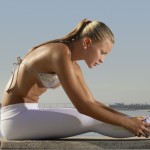 You should certainly have written goals for improving your scoliosis, both long term and short term. Goals such as relieving your pain, improving your posture, avoiding surgery are all important goals to set and work towards.
You should certainly have written goals for improving your scoliosis, both long term and short term. Goals such as relieving your pain, improving your posture, avoiding surgery are all important goals to set and work towards.
Some goals may be unrealistic, such as expecting that moderate to severe scoliosis to be fully corrected by doing scoliosis specific exercise aline. A better goal in that case would be to improve your scoliosis as maximal as possible.
Set goals but be flexible with the timeframe and degree of your progress. Remember, writing your goals down increases your chanced of success by 40%, so be sure to put them down in writing!
10. Schedule An Appointment With Yourself
 In life, things rarely get done unless you schedule them. Your scoliosis exercises are the same. Figure out a time of day that best fits into your schedule for you to do your exercises and then set aside that chunk of time to do them on a regular basis. Also figure out the place where you can do them. You should pick out a place in your home that you have some room. It’s best to have a mirror in front of you to see yourself doing the exercises through another mirror behind you.
In life, things rarely get done unless you schedule them. Your scoliosis exercises are the same. Figure out a time of day that best fits into your schedule for you to do your exercises and then set aside that chunk of time to do them on a regular basis. Also figure out the place where you can do them. You should pick out a place in your home that you have some room. It’s best to have a mirror in front of you to see yourself doing the exercises through another mirror behind you.
Don’t just think, “I’ll do them sometime during the day when I get a break in my day.” That break will never come. Make your scoliosis exercises a priority and schedule them accordingly.
By following these 10 tips you will get the most out of your scoliosis exercise programs!
If you have any other tips to share you think would help others please feel free to do so in the comment section.
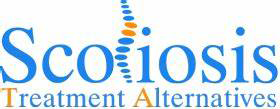

Where can I learn Nu-Schroth excercises? I live in South Carolina.
Our closest office where you could learn Nu-Schroth exercises would be in Raleigh. If you are interested in attending a class there please give us a call at (800) 943-1254 for a Free Phone Consult.
I live in Clinton, MD. Are there any chiropractors or places where I can learn Nu-Schroth exercises?
Myra
Srmyra, While we don’t have any offices in Maryland at this time we do have offices in New Jersey and Virginia. We do our classes in Weekend Immersive courses (on a Sat. & Sun) so if either of those locations might work for you then schedule a Free Scoliosis Phone Consult by clicking this link: http://scoliosistreatmentalternatives.com/free-scoliosis-phone-consult-adult
Dr. Brett Diaz, D.C.
Where can I learn Nu-Schroth exercises? I live in North western Pa?
Stephanie,
Our closest office to you is in Buffalo New York. If you would like to find out if our treatments are right for you then please give us a call at (800) 943-1254 for a Free Phone Consult.
Dr. Brett Diaz, D.C.
I live in Warner Robins, GA. Where is the closest office and will Medicare pay for learning the exercises?
Margaret,
Our closest office to you is in Atlanta. Please give us a call at (800) 943-1254 for a Free Phone Consultation to find out if our programs are right for you.
Dr. Brett Diaz, D.C.
I live between Gulfport, Mississippi and Hattisburg, Mississippi. Do you have an office in this area? I’m 75 years old, can you help me?
I’m sorry, but no we don’t.
I live in Nebraska. Any locations relatively close?
Dayna,
Our closest office to you would be in Denver Colorado. We teach our classes in weekend immersive classes on a Saturday and Sunday. You learn them in the office then do them at home. If you think you might be able to travel to Denver for the class then give us a call at (800) 943-1254 for a Free Phone Consult to discuss your case further and find out if Nu-Schroth is right for you.
Dr. Brett Diaz, D.C.
Hi, we live in Aurora Colorado, do you have a place where I can take my daughter for the Nu-Schroth exercises?
Laura,
Yes. In fact, we have an office in Aurora and we hold our weekend classes at a movement studio in Denver. Please give me a call at (800) 943-1254 to discuss her case further and find out if our treatments are right for her scoliosis.
Dr. Brett Diaz, D.C.
I m 41 years old, I ve scoliosis ( 44 degree ). Is this exercises reduce the pain?
Shereen,
Yes, Nu-Schroth can reduce or eliminate your scoliosis related pain. To find out if it’s right for your scoliosis, give us a call at (800) 943-1254 for a Free Phone Consult.
Dr. Brett Diaz, D.C.
I can not afford the special Nu-Schroth classes. My insurance does not cover them. Any suggestions?
We do offer a finance option through Care Credit, which allows you to pay off the cost of your classes over 6 months without interest. Here is there web site: http://carecredit.com
Dr.Brett mi hija tiene escoliosis de 60 grados, ella tiene 16 años, estuvo con terapias durante un año pero ahora se contractura mucho el brazo derecho desde el cuello no puede moverlo, es alergica a los aines solo puede tomar paracetamol para el dolor, ahora tiene mareos, . le agradeceria que me indique que ejercicios puede hacer nosotras vivimos en Lima Peru.
Sonia,
Por desgracia , no tengo conocimiento de ningún médico en el Perú que se especializan en la escoliosis usando SpineCor y Schroth . Si usted estaría dispuesto a llevarla a los EE.UU. para el tratamiento , por favor llámenos al (800) 943-1254 para un teléfono gratuito Consult.
Dr. Brett Díaz , DC
I Live in Dallas tx
Is there a location in my area?
Liza, Yes, we do have an office in Dallas Texas! The doctor in that office is Dr. Lamantia. Please feel free to give him a call at (800) 943-1254 for a Free Phone Consult to discuss your scoliosis to find out if our treatments are right for you. Dr. Brett Diaz, D.C.
I in Kenya and I have scoliosis, is there a way I can benefit from your training?
Samson,
Unfortunately we do not have any facilities in Africa.
Hi , do you have any office in middle east or Asia?
I live in Mesa Arizona do you have classes that I am learn these exercises?
Patti,
Our closest location to you for our Schroth classes is in Phoenix.
I live in Opelika, Al or Columbus, Ga, Atlanta, Ga where is the closest location for Schroth classes.
Our closest location to you is in Atlanta. Please call (800) 943-1254 and ask for Dr. Deutchman, (he is our doctor in that office) for a Free Scoliosis Phone Consult.
I gather that since I live in St. Louis I would need to come to the Chicago area for evaluation and fitting. Is this a correct assumption? I gather from your replies to other clients that is some area of the country that a doctor or therapist are located that are qualified and can work with a client in learning the exercises and getting adjustments to one’s brace as one changes. Does the St. Louis area have anyone?
Elaine,
Thank you for your interest in our practice. Right now we don’t have an office in St. Louis, but we are looking for a doctor in that area who is interested in providing our type of treatments. So the closest office to you would be in the Chicago area.
While St. Louis is an area where we are looking for a doctor to join our group, currently we do not have anyone in St. Louis. So Chicago would currently be the closet office of ours to you. We do offer our Schroth classes in Weekend Immersive Courses to make it convenient for people who travel to see us. Also, one of the nice things about our practice is that you only have to come to see us a few times per year as our treatments (SpineCor and Schroth) are pretty much home based therapies.
Who would I see if I live in West Los Angeles?
Hello Helene,
Thank you for your interest in our practice. I am the doctor who see’s patients in Southern California so you would likely want to come to see me at our closest office to you in Studio City as our other office is in Irvine.
I would recommend that you first give me a call for a Free Scoliosis Phone Consult to make sure our treatments are right for your scoliosis.
Dr. Brett Diaz, D.C.